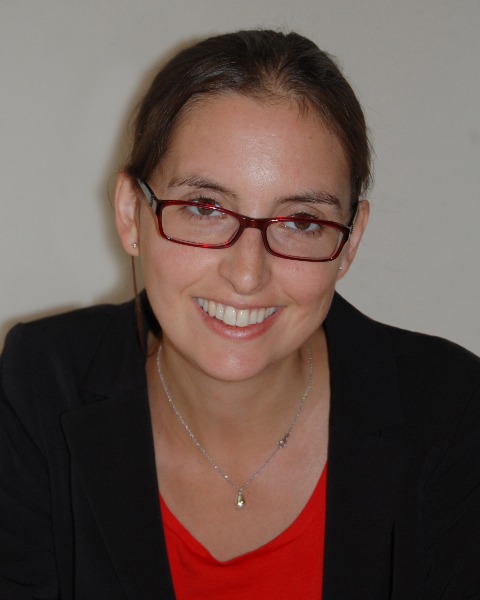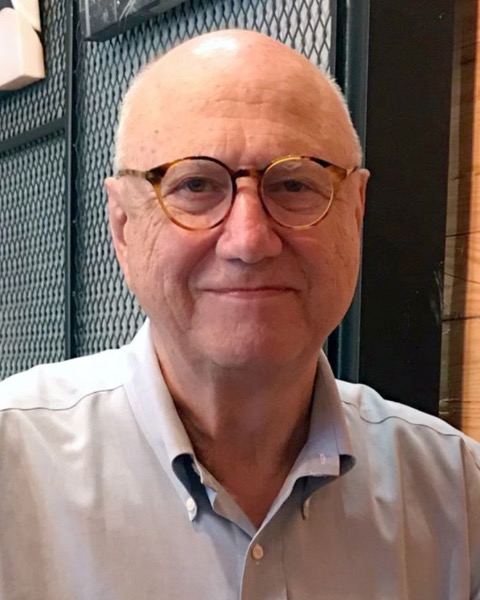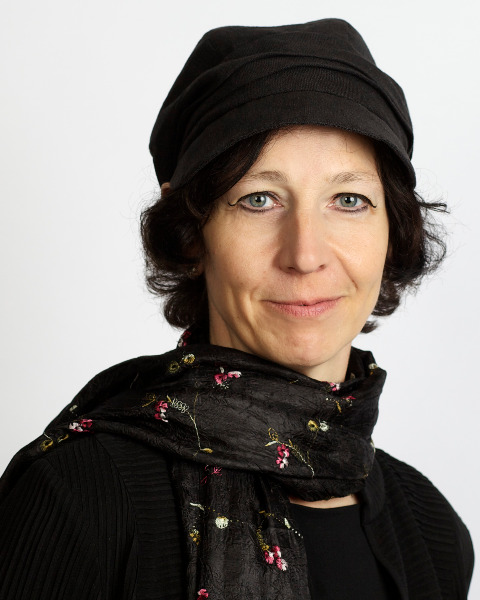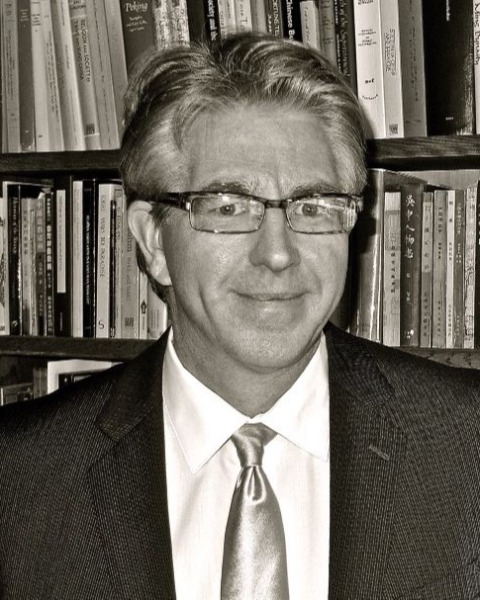Happenings
Related Events, Publications, and Other Musings
We are incredibly excited to announce that our book, Understanding Authenticity in Chinese Cultural Heritage, will soon be published by Routledge in the Research on Heritage and Museums in Asia Series.
Please have a look at: Understanding Authenticity in Chinese Cultural Heritage
ABSTRACT
Understanding Authenticity in Chinese Cultural Heritage explores the construction of "authenticity" and its consequences in relation to Chinese cultural heritage—those objects, texts, and intangible practices concerned with China’s past.
Including contributions from scholars around the world reflecting on a range of different materials and time periods, Understanding Authenticity emphasizes the situatedness and fluidity of authenticity concepts. Attitudes toward authenticity change over time and place, and vary between communities and object types, among stakeholders in China as they do elsewhere. The book examines how "authenticity" relates to four major aspects of cultural heritage in China—art and material culture; cultural heritage management and preservation; living and intangible heritage; and texts and manuscripts—with individual contributions engaging in a critical and interdisciplinary conversation that weaves together heritage management, art history, archaeology, architecture, tourism, law, history, and literature. Moving beyond conceptual issues, the book also considers the practical ramifications for work in cultural heritage management, museums, and academic research.
Understanding Authenticity in Chinese Cultural Heritage provides an opportunity for reflection on the contingencies of authenticity debates - not only in relation to China, but also anywhere around the world. The book will be of interest to scholars and students in a variety of fields, including heritage studies, Asian studies, art history, museum studies, history, and archaeology.
TABLE OF CONTENTS
Part I: Art and Material Culture
Chapter 1. The Construction and Deconstruction of Authenticity in Chinese Art
David Scott
Chapter 2. Copy, Yet Original: Re-examining "Fang Ni Zan" Paintings in the 15th - 17th Century
Penny Xu
Chapter 3. Substitutional Objects: The Authenticity of Su Shi’s Snowy Wave Stone from 1101 to 1700
Gillian Zhang
Chapter 4. Shanzhai Tensions in U.S.-Chinese Cultural Heritage Diplomacy
Jennifer Kreder
Part II: Cultural Heritage Management and Preservation
Chapter 5. UNESCO World Heritage and the Problem of Authenticity: The Case of Built Structures and China´s Tangible Cultural Heritage
Phillip Grimberg
Chapter 6. Exploring the Implication of Tourism for Heritage Interpretation of National Archaeological Parks in China: The Case of Linzi Qi State Site,
Tao Li
Chapter 7. Perspectives on Authenticity and the Preservation of the Great Wall of China
Stefan Gruber
Chapter 8. Critical Chinese Copying as an Interrogation of the Hegemony of Modernity
Guo Boya
Chapter 9. Can a Copy Deliver an Authentic Experience? An Interdisciplinary Approach to Fieldwork Conducted in Southeast China
Patrycja Pendrakowska
Part III: Living and Intangible Cultural Heritage
Chapter 10. Crafting Authenticity: Two Case Studies of the Material Metamorphosis of Cultural Heritage in China’s Creative Economy
David Francis and Zhang Lisheng
Chapter 11. The Authenticity Problem in Conteporary Techniques of Zisha Teapot Making
Gao Xuyang and Anke Hein
Chapter 12. The Modern Invention of Big Red Robe Tea: History, Science, Story, and Performance
Jean DeBernardi
Chapter 13. Chapter 13. Authenticity, Legitimacy, and Mimesis in the Production and use of Chinese-inspired Japanese Tea Ceremony Utensils: Karamono (Chinese Things)
Robin Wilson
Part IV: Texts and Manuscripts
Chapter 14. "Authenticity" and Shu: What is at Stake?
Corina Smith
Chapter 15. (Mis)remembering the Tang? Issues of Authenticity Surrounding the Attribution of the Ershisi Shipin to Sikong Tu
Rachel McVeigh
Chapter 16. Authenticity and Self-representation: A Case Study of Song Zhiwen
Miao Xiaojing
Chapter 17. Authenticity beyond Authority? The Case of Handwritten Entertainment Fiction from the Chinese Cultural Revolution
Lena Henningsen and Duncan Paterson
Dr Celia Carrington Riely 李慧聞 has recently published her article 《董其昌〈烟江叠嶂圖〉兩個版本及高清圖片影響下的真偽鑒別》"The Two Versions of Dong Qichang’s River in Mist and Piled Peaks and the Impact of High-Resolution Photography on the Question of Authenticity (in Chinese), in Zhejiang University Journal of Art and Archaeology 浙江大學藝術與考古 5 (2021):37-92.
Dr Riely had previously presented her work in our March 2020 "Understanding Authenticity in Chinese Cultural Heritage" conference, and we are excited to see it now in print! Please have a look, and congratulations to Dr Riely.
Dr Hiromi Kinoshita recently presented in our series on her recent exhibition at the Philadelphia Museum of Art titled "Authentic: Truth and Perception in Chinese Art." As part of the programming for that exhibition, a conversation was recorded between her, Ai Weiwei and James Lally. To listen to the conversation, please follow the link below:
https://www.youtube.com/watch?v=Adne0dRdCXg&t=3s
Description:
Artist Ai Weiwei and art dealer James Lally joined curator Hiromi Kinoshita to discuss their own perspectives about copying in Chinese art, raising questions about what we truly value in cultural artifacts. This online conversation brought together topics from the Philadelphia Museum of Art’s current installation, "Authentic: Truth and Perception in Chinese Art" and the exhibition, Ai Weiwei: The Liberty of Doubt at Kettle’s Yard, University of Cambridge. "Authentic: Truth and Perception in Chinese Art" and the accompanying programs presented in conjunction with the exhibition are made possible by The Robert H. N. Ho Family Foundation Global.
For the "Authentic: Truth and Perception in Chinese Art" exhibit:
https://philamuseum.org/calendar/exhibition/authentic-truth-and-percepti...
Thank you again for Dr Kinoshita for sharing her work!
We are excited to announce that Routledge will soon publish Understanding Authenticity in Chinese Cultural Heritage (expected spring 2023), featuring many chapters based on talks given in our series and during the March 2021 conference. Please have a look at the announcement, replicated below, and thank you to all the contributors, reviewers, sponsors, and staff at Routledge:
https://www.routledge.com/Understanding-Authenticity-in-Chinese-Cultural...
Book Description
Understanding Authenticity in Chinese Cultural Heritage explores the construction of "authenticity" and its consequences in relation to Chinese cultural heritage – those objects, texts, and intangible practices concerned with China’s past.
Including contributions from scholars around the world reflecting on a range of different materials and time periods, Understanding Authenticity emphasizes the situatedness and fluidity of authenticity concepts. Attitudes towards authenticity change over time and place, and vary between communities and object types, among stakeholders in China as they do elsewhere. The book examines how "authenticity" relates to four major aspects of cultural heritage in China - Art and Material Culture; Cultural Heritage Management and Preservation; Living and Intangible Heritage; and Texts and Manuscripts - with individual contributions engaging in a critical and interdisciplinary conversation that weaves together heritage management, art history, archaeology, architecture, tourism, law, history, and literature. Moving beyond conceptual issues, the book also considers the practical ramifications for work in cultural heritage management, museums, and academic research.
Understanding Authenticity in Chinese Cultural Heritage provides an opportunity for reflection on the contingencies of authenticity debates - not only in relation to China, but also anywhere around the world. The book will be of interest to scholars and students in a variety of fields, including heritage studies, Asian studies, art history, museum studies, history and archaeology.
Table of Contents
Part I: Art and Material Culture;
1. The Construction and Deconstruction of Authenticity in Chinese Art;
2. Copy, Yet Original: Re-examining "Fang Ni Zan" Paintings in the 15th - 17th Century;
3. Substitutional Objects: The Authenticity of Su Shi’s Snowy Wave Stone from 1101 to 1700;
4. Shanzhai Tensions in U.S.-Chinese Cultural Heritage Diplomacy;
Part II: Cultural Heritage Management and Preservation;
5. UNESCO World Heritage and the Problem of Authenticity: The Case of Built Structures and China´s Tangible Cultural Heritage;
6. Exploring the Implication of Tourism for Heritage Interpretation of National Archaeological Parks in China: The Case of Linzi Qi State Site;
7. Perspectives on Authenticity and the Preservation of the Great Wall of China;
8. Critical Chinese Copying as an Interrogation of the Hegemony of Modernity;
9. Can a Copy Deliver an Authentic Experience? An Interdisciplinary Approach to Fieldwork Conducted in Southeast China;
Part III: Living and Intangible Cultural Heritage;
10. Crafting Authenticity: Two Case Studies of the Material Metamorphosis of Cultural Heritage in China’s Creative Economy;
11. The Authenticity Problem in Conteporary Techniques of Zisha Teapot Making;
12. The Modern Invention of Big Red Robe Tea: History, Science, Story, and Performance;
13. Authenticity, Legitimacy, and Mimesis in the Production and use of Chinese-inspired Japanese Tea Ceremony Utensils: Karamono (Chinese Things);
Part IV: Texts and Manuscripts;
14. "Authenticity" and Shu: What is at Stake?;
15. (Mis)remembering the Tang? Issues of Authenticity Surrounding the Attribution of the Ershisi Shipin to Sikong Tu;
16. Authenticity and Self-representation: A Case Study of Song Zhiwen;
17. Authenticity beyond Authority? The Case of Handwritten Entertainment Fiction from the Chinese Cultural Revolution
Editor(s)
Biography
Anke Hein is Associate Professor in Chinese Archaeology at the University of Oxford and St Hugh’s College. She is an anthropological archaeologist focusing on issues of culture contact, identity formation and expression, and the history and practice of archaeology as a discipline, particularly in the Chinese border regions.
Christopher J. Foster is a British Academy Postdoctoral Fellow, affiliated with the School of History, Religions and Philosophies at SOAS University of London. He is a historian of premodern China, focusing on intellectual history, manuscript culture, primary education, and canonization.
Reviews
"In a world fraught with uncertainties about "verity" the collection of essays entitled Understanding Authenticity in Chinese Cultural Heritage comes at a particularly germane time. Assembled by leading scholars in Chinese art and social history, the essays dig deeply into definitions of antiquity, authenticity, replication, and deception—intended and not."
William Chapman, Dean, School of Architecture, the University of Hawaiʻi at Mānoa
"Does authenticity matter in the context of Chinese heritage? How do we understand 'copycat' culture? From the forbidden city, to tea, to Chinese literacy, this book delves into these questions on a delightful journey through Chinese heritage from ancient to contemporary times. A must-read for anyone interested in China, or antiquity in general."
Yujie Zhu, Senior Lecturer, Research School of Humanities & the Arts, Australian National University
"The problem of this volume can be fairly stated as why the idea of authenticity in China cannot be reduced to questions of copying and representation. But nor can they be dismissed. All the contributors have their different answers to this paradox which, by following their real value, we are led to a new pathway for a comparative understanding of authenticity."
Michael Rowlands, Emeritus Professor of Material Culture, University College London
Please have a look at the following call for papers, for a conference to be held at SOAS (London) on 30-31 March 2023:
CALL FOR PAPERS: “CONTESTING AUTHENTICITY IN LITERATURE, 1200-1700”
30 - 31 March 2023 / Senate House, University of London
Event details and further information can be found at https://ies.sas.ac.uk/events/contesting-authenticity-literature-1200-1700 .
This two-day conference will explore the concept of “contesting authenticity” in later medieval and early modern literature, including both the production and ongoing reception of texts of contested authenticity. Proposals are welcome which consider literature in any language, including translations.
Topics may include, but are not limited to:
Literary fakes, forgeries, and pseudo-texts;
Continuations and supplements;
Translation as (in)authentic;
Imitation/imitatio and authenticity;
Plagiarism vs forgery;
Issues of truth in literature (e.g. narrative authenticity);
The reception of medieval and early modern inauthentic texts;
The practice of contesting literary authenticity;
Scholarly practices and methodologies;
Languages of (in)authenticity.
Preference will be given to in-person paper proposals. Please submit a 200-300 word abstract to Rebecca Menmuir (authenticity2023@gmail.com) by Friday 11th November 2022.
Image (above): Annius of Viterbo, fifteenth-century forger
Image (background): A plate from the Lead Books of Sacromonte, sixteenth-century forgeries
A short piece that may be of interest to our network members. By Amber Myers Wells, titled "Virtual Exhibitions and Archaeological Reproductions: Misleading and elitist or the best way to preserve our cultural heritage?"
An opinion piece that may be of interest to those working on authenticity in cultural heritage:
"Archeologists: Gatekeepers of authenticity?" By Stephen Acabado, Mylene Lising and Marlon Martin.
Find the text here. Enjoy!
It is with heavy hearts that we forward an announcement of the passing of Doreen Stoneham, a foremost expert in thermoluminescence dating and founding director of Oxford Authentication. You may find the full announcement by Oxford Authentication at the following address: https://www.oxfordauthentication.com/doreen-stoneham/.
A recently published article may be of interest to members of our network, have a look!
"Strategic commodification: The object biography of Tibetan thangka paintings in contemporary China"
In HAU: Journal of Ethnographic Theory
By Ming Xue (American Museum of Natural History)
This article focuses on Tibetan thangka and thangka painters in Amdo Rebgong (Qinghai, China), who are caught between a state-fostered tourist market promoting Tibetan thangkas as folk art and an intermediate market where clients pursue the religious authenticity and efficacy of thangka paintings. My study rejects any simple dichotomy of sacred object and commodity and views the object biography of Tibetan thangkas as contingent on the sites of thangka within the complex structure of the art market, the context of the actual exchanges, and the specific relationships forged between painters and their clients, an important narrative that has been missing in previous studies of Rebgong thangka art and its commodification. I argue that commodification should be understood as a strategic process where some Rebgong painters tactically participate in the market in order to authenticate their religious identity, preserve a cultural tradition, or establish artistic authority within and beyond Tibetan communities.
https://www.journals.uchicago.edu/doi/10.1086/717955
Association for Asian Studies 2022
B-V47: Understanding Authenticity in China’s Cultural Heritage
Friday, March 25, 2022
9:30am – 11:00am HST (Hawaii)
Location: Virtual
Virtual Organizer(s)
-

School of Oriental and African Studies, University of London, United Kingdom
-

University of Oxford, United Kingdom
-
Virtual Chair(s)
-

University of Hawaiʻi at Mānoa, United States
Virtual Paper Presenter(s)
-

University of Oxford, United Kingdom
-

Museum für Asiatische Kunst, Staatliche Museen zu Berlin, Germany
-

University of Kansas, United States
-

Humboldt Universität zu Berlin, Poland
Virtual Discussant(s)
-

Los Angeles County Museum of Art, United States
Ideas about “authenticity” are culturally constructed and historically contingent. What one deems to be genuine or fake, authentic or insincere follows cultural, societal and legal norms agreed upon by particular communities in specific contexts. This panel problematizes stereotypes of China as a “copycat culture" by exploring how attitudes towards authenticity in China were discussed, changed over time and place, and varied between communities and object types. Four major areas are addressed, covering a long time-span from the Neolithic period to the present: Archaeology and Material Culture; Art and Art History; Texts and Manuscripts; and Heritage Management and Preservation. Dr Anke Hein (Oxford) explores how Gansu locals today harness the cultural capital of the past through replication of Neolithic pottery, blurring boundaries between souvenirs and forgeries. Dr Birgitta Augustin (Berlin) discusses personal authenticity as expressed in Ni Zan’s (14th c.) poeyr and painting. Mr Yan Weitian (Kansas) shows how epigraphic sources informed 18th c. debates over the relationship between historicity and authenticity in calligraphy. Dr Patrycja Pendrakowska (Warsaw) explores Chinese views of Western architecture theme parks in southern China, as a vehicle for contrasting cultural expectations of authenticity. The session is chaired by Stephen Little (LACMA) and Bill Chapman (Hawai'i), senior figures in the museum industry and academia, who will guide dialogue. The panel features pre-circulating papers, and unlike traditional formats, speakers will only briefly summarize their main points, with the majority of the session dedicated to discussion. The papers are work in progress, for a planned journal special issue.
Presentations:
- Modern Majiayao: Recreation, Imitation, Forgeries?
Virtual Paper Presenter: Anke Hein – University of Oxford
- Authentic Ni Zan: Snow, Bamboo, the Moon and Sages from the Past
Virtual Paper Presenter: Birgitta Augustin – Museum für Asiatische Kunst, Staatliche Museen zu Berlin
- Conceptions of Historicity in Qing Calligraphy
Virtual Paper Presenter: Weitian Yan – University of Kansas
- Can a Copy Deliver an Authentic Experience? An Interdisciplinary Approach to Fieldwork Conducted in Southeast China
Virtual Paper Presenter: Patrycja Pendrakowska – Humboldt Universität zu Berlin
Kyoto National Museum International Symposium: Dunhuang Forgeries and Recent Silk Roads Research, March 19, 2022
This symposium focuses on the cache of manuscripts first discovered in the year 1900 in the Library Cave in the Mogao Caves near Dunhuang, a key center along the Silk Roads. Following their discovery, Dunhuang manuscripts were removed by expeditions from Great Britain, France, Japan, and Russia, as well as by Chinese officials, so collaborations among these holding institutions and among scholars in each country is essential for their research today. Since the 1980s, however, scholars have called into question the authenticity of many Dunhuang manuscripts in Japanese collections, including those in the Kyoto National Museum. Symposium participants will discuss recent research and initiatives relating to Dunhuang and the Silk Roads around the world and reconsider the issue of Dunhuang manuscript forgeries in Japan.
For more information, and to register, visit:
A special issue of China Perspectives was published that may be of interest to many:

https://www.cefc.com.hk/issue/china-perspectives-2021-3/
CHINA PERSPECTIVES 2021/3
SPECIAL FEATURE
Cultural Values in the Making: Governing through Intangible Heritage
Editorial – Cultural Values in the Making: Governing through Intangible Heritage
Florence Padovani • Guillaume Dutournier
Common, Luxury, and Fake Commodities: Intangible Cultural Heritage Markets in China
ABSTRACT: Can traditional cultural practices thrive if they are commercialised? Or should the state protect them from “the market”? This study investigates these questions by studying the marketisation of traditional handicrafts in the tourism sector of Nanjing municipality (Jiangsu Province, China). Building on Boltanski and Esquerre’s (2020) work on the “enrichment economy,” I find that state-led marketisation efforts have simultaneously raised and distorted the value of intangible cultural heritage (ICH) commodities in China. Many ICH inheritors are stuck in the middle: although they benefit from enhanced recognition and valorisation of ICH products, they face difficulties in competing with “fake” and luxury ICH commodities. ICH commodities are thus characterised by an “in-between” status – between the enriched and the mass economy.
KEYWORDS: China, intangible cultural heritage (ICH), commodities, markets, luxury, fake.
Turning Indigenous Sacred Sites into Intangible Heritage: Authority Figures and Ritual Appropriation in Inner Mongolia
ABSTRACT: Oboo cairns are sacred monuments worshipped by minority peoples in Inner Mongolia. The inclusion of oboo worship on China’s national list of Intangible Cultural Heritage in 2006 has caused negotiations and innovations in different social and ritual strata of local societies. Going from provincial decision-making to the local interpretation of heritage classification, this article examines how the indigenous intelligentsia and ordinary people appropriate oboo to make them valuable and powerful sacred monuments.
KEYWORDS: Inner Mongolia, ethnic group, oboo, worship, intangible heritage, intelligentsia, competition, appropriation, politics.
A Difficult Integration of Authenticity and Intangible Cultural Heritage? The Case of Yunnan, China
ABSTRACT: Authenticity is a concept that is not seen in UNESCO’s Intangible Cultural Heritage (ICH) discourse but is emphasised in Chinese ICH official discourse. An analysis of the origins, discourses, and practices of the notion of authenticity of ICH, as well as the difficulties generated from this concept, illustrates the creation of ICH in China, which mediates between local and international ideologies. This paper adopts historical and critical heritage discourse perspectives to examine cases in Yunnan Province, China, including the understandings, discourses, and practices of the idea of “authenticity” and related original ecology in regard to experts, officials, and ICH practitioners. Through the lens of authenticity, the paper illustrates the history of the complicated relationships between authenticity and ICH in the last 20 years, revealing the dynamism and difficulties in the integration of authenticity and ICH as an official discourse, and the possibilities and restrictions of reconceptualising authenticity in the current contexts of integrating culture and tourism, as well as the reform of cultural governance, in contemporary China.
KEYWORDS: Intangible cultural heritage (ICH), authenticity, Yunnan, authorised heritage discourse, integration of culture and tourism in China.
Entexted Heritage: Calligraphy and the (Re)Making of a Tradition in Contemporary China
ABSTRACT: From medieval times to the present, calligraphy has been theorised as a product of “spirit” rather than of the hand, and has been situated atop the Chinese aesthetic hierarchy. Recognising calligraphy as a key aspect of national identification, the People’s Republic of China applied for its recognition to the Representative List of the Intangible Cultural Heritage of Humanity. Through the process of constructing calligraphy as Intangible Cultural Heritage (ICH), a simplified calligraphic canon emerged, which epitomises the “correct spirit of tradition.” Building on art historical and anthropological questions of transmission and authentication of the classical tradition of calligraphy, this paper challenges this idealised conceptualisation by investigating how a contemporary Chinese ICH regime has worked to “entextualise” calligraphy into present social and political circumstances.
KEYWORDS: calligraphy, rubbing, Intangible Cultural Heritage (ICH), entextualisation, spirit.
An interesting and quick read at the Anoxfordhistorian.com blog:
The Ashmolean Cast Gallery - do 'fakes' matter?
"Continuing the Museumcraft series, we take a look at the Ashmolean Cast Gallery and the questions it raises about 'authenticity, education and experimentation in the world of museums."
Two of the presenters at our March 2021 conference recently published their materials, have look!
--- --- ---
Touched by the Past? Re-Articulating the Longxing Temple Sites as Community Heritage at Qingzhou County, China
Li Tao & Qiaowei Wei
Archaeologies (2021)
Abstract
Community heritage usually reveals bottom-up celebrations of multi-dimensions of social life, which negotiate meaning to certain places, sites, or even monuments under practices of heritage. In 1996, excavations and restorations of the Longxing Buddhist temple at Qingzhou County, hundreds of precious Buddhist statues, gained attention from the general public and all Buddhist communities. With the rebuild of the new Longxing Buddhist temple at Qingzhou County, actually motivated by Xia Jingshan, an eminent Buddhist figure painter, the religious and local community collaborated to express their voices in heritage discourse. A number of factors influence the reinterpretation of Longxing Temple sites: the desire to advocate Qingzhou County as an important city in ancient China, to depict Qingzhou County as having a rich cultural and religious diversity, and to attract tourists and religious communities to visit Qingzhou.
Résumé
Le patrimoine communautaire révèle habituellement des célébrations initiées localement quant aux multiples dimensions de la vie sociale, lesquelles confèrent une signification à certains endroits, sites ou même des monuments conformément aux pratiques du patrimoine. En 1996, les travaux de fouille et de restauration du temple bouddhiste de Longxing dans le Comté de Qingzhou, comptant des centaines de précieuses statues bouddhistes, ont attiré l'attention du grand public et de toutes les communautés bouddhistes. Avec la reconstruction du nouveau temple bouddhiste de Longxing dans le Comté de Qingzhou, initiée de fait à l'initiative de Xia Jingshan, un éminent peintre figuratif bouddhiste, la communauté religieuse et locale a collaboré pour exprimer sa voix dans le discours sur le patrimoine. Une variété de facteurs influent sur la réinterprétation des sites du temple de Longxing: le désir de promouvoir le Comté de Qingzhou comme une cité importante dans la Chine ancienne, de dépeindre le Comté de Qingzhou comme étant doté d'une riche diversité culturelle et religieuse et d'attirer les touristes et les communautés religieuses pour une visite de Qingzhou.
Resumen
El patrimonio comunitario generalmente revela celebraciones de abajo hacia arriba de múltiples dimensiones de la vida social, que negocian el significado de ciertos lugares, sitios o incluso monumentos según las prácticas del patrimonio. En 1996, con las excavaciones y restauraciones del Templo budista Longxing en el condado de Qingzhou, cientos de preciosas estatuas budistas llamaron la atención del público en general y de todas las comunidades budistas. Con la reconstrucción del nuevo Templo budista Longxing en el condado de Qingzhou, en realidad motivada por Xia Jingshan, un eminente pintor de figuras budistas, la comunidad religiosa y local colaboró para expresar sus voces en el discurso del patrimonio. Varios factores influyen en la reinterpretación de los sitios del Templo Longxing: el deseo de defender el condado de Qingzhou como una ciudad importante en la antigua China, representar al condado de Qingzhou con una rica diversidad cultural y religiosa y atraer turistas y comunidades religiosas para que visiten Qingzhou.
This conference aims to break down barriers between art forms and explore the vigorous intermedial dialogue in Qing imperial art practices.
About this Event
In the history of Chinese art, Qing imperial art stands out as a unique type that speaks to the spirit of innovative creativity and systematic order. Facilitated by the development of new technologies as well as new visual and material trends within and outside of China, imitations of various media, ranging from ancient bronzes to organic precious stones, frequently took place in art-making practices at the Qing court. At the same time, appropriations of designs and styles from earlier art forms originating in China and those introduced from other parts of the world were also favoured by Qing imperial patrons.
The current conference has invited scholars from different parts of the world to share their research on the interplay between various material forms, pictorial images, and relevant discursive repertoires of values and beliefs in art practices at the Qing court. Through this event, we hope to unveil a series of historical moments, when intermedial dialogues in the production of Qing imperial artworks led to the creation of innovative art forms, the vigorous practice of cross-media imitation/appropriation, as well as the generation, alternation and loss of meanings.
Programme
(scheduled in British Summer Time)
13th May 2021
13:00-14:00. Keynote Lecture
Speaker: Dr. Yu-Chih Lai, Institute of Modern History, Academia Sinica
Title: Making Likeness Paradigm: A Representation Turn in the Qianlong Court
14:00-14:30 Q&A Session
14th May 2021
12:00-12:30 Welcome and Opening Remarks
Dr. Stacey Pierson, SOAS, University of London
Chih-En Chen and Kexin Ma, SOAS, University of London
12:30-14:25 SESSION I: RE-MEDIATION AND RE-PRESENTATION
Chair: Stacey Pierson
12:30-12:40 Introduction by Session Chair
12:40-13:05 ‘(This is) Not a duplicate’, the Creation and Standardisation of Representing Materials in the Qianlong`s Court Painting— A Case Study of the Depictions of the Emperor`s Costumes in the Huangchao Liqi Tushi
Haoyang Zhao, University of Glasgow
13:05-13:30 The Qianlong Emperor’s Pictorial Stelae
Gillian Zhang, Ohio State University
13:30-13:55 Across Time and Media: The Application and Transformation of Ancient Painting Pattern in Kesi (緙絲) at the Qing Court
Yanzhe Zhao, Beijing Fine Art Academy
13:55-14:25 Q&A Session with All Speakers
14:25-16:20 SESSION II: INTERPLAY WITH THE FOREIGN
Chair: Chih-En Chen
14:25-14:35 Introduction by Session Chair
14:35-15:00 Opening the Black Box: A Case Study of Qing Enamels Referencing Japanese Lacquer
Julie Bellemare, Bard Graduate Center
15:00-15:25 Pink: The Semiotic power of Colour at the Qing Court
Helen Glaister, SOAS, University of London
15:25-15:50 Reception and Appropriation of Rococo Chinoiserie Style in the Qing Court: A Case Study of the Flying Serpent Hairpin
Yen-Tzu Pai, National Taiwan University
15:50-16:20 Q&A Session with All Speakers
15th May 2021
12:00-13:55 SESSION III: TEXT, IMAGE, AND SOUND
Chair: Kexin Ma
12:00-12:10 Introduction by Session Chair
12:10-12:35 The Tomb of the Qianlong Emperor: Intermediality in Two Registers
Nixi Cura, SOAS, University of London
12:35-13:00 Constructing the Image of a Sage ruler through Sound Events—Analysis of the Album of Magnificent Record of Longevity for Emperor Kangxi’s Sixtieth Birthday (Wanshou Shengdian Chuji)
Yung-Fang Hsu, The Courtauld Institute of Art
13:00-13:25 Qianlong Emperor and His “Su Shi” Inkstones
Yan Weitian, University of Kansas
13:25-13:55 Q&A Session with All Speakers
13:55-15:15 SESSION IV: OBJECT, ARCHITECTURE, RECONSTRUCTED SPACE
Chair: Julie Bellemare
13:55-14:05 Introduction by Session Chair
14:05-14:30 Qianlong’s Garden of the Clear Ripples: The Architectonic Appropriation of the Song-dynasty Pictures of Tilling and Weaving
Roslyn Lee Hammers, University of Hong Kong
14:30-14:55 Positioning the Self: Emperor Qianlong’s Glass Mirror Table Screens
Yan Jin, University of Chicago
14:55-15:15 Q&A Session with All Speakers
15:15-16:35 Session V: IMITATION, TRANSLATION, AND INVENTION IN MUSIC
Chair: Rachel Harris, SOAS, University of London
15:15-15:25 Introduction by Session Chair
15:25-15:50 Uzagaku: Ryukyuan Musical Tradition, or “Mere” Imitation and Appropriation?
Travis Seifman, University of Tokyo
15:50-16:15 European Catholic Music in Qing Period: Its Transformation and Appropriation through The Years
Maria Isabel Forcada, University of Seville
16:15-16:35 Q&A Session with All Speakers
Registration
In hopes of providing a vibrant and broadly accessible platform for our participants to share their findings with a wider audience around the world, we have decided to hold the conference virtually via Zoom. The conference is free and open to the public, but registration is necessary. The Zoom meeting link will be sent to those who have registered via Eventbrite prior to the conference. By registering the event, you are authorising us to collect your email address for delivering updates about the conference.
If you have any further queries, please feel free to contact us via email (intermediality2021@gmail.com).
EVENTBRITE LINK: https://www.eventbrite.co.uk/e/imitation-or-appropriation-intermediality...
An upcoming talk the touches upon issues of identity in relation to museum collections, and may be of interest to those working on the similar nexus of questions that surround "authenticity" as a construct.
--- --- ---
APRIL 7 @ 1:15 PM - 3:00 PM
Speaker: Sarah Laursen, Alan J. Dworsky Associate Curator of Chinese Art, Harvard Art Museum
The Harvard Art Museums’ database identifies over 6,600 objects in the collection as “Chinese.” But are they really? At least one third of China’s dynastic history—from its unification by the first emperor in 221 BCE until the fall of the Qing dynasty in 1912—took place under foreign rule. Even when an emperor could claim Han Chinese ancestry, his domain was frequently home to sizeable non-Chinese populations. This talk will explore the identities of so-called “Chinese” objects in the collection that might more rightly be associated with groups like the Xianbei. The logic behind the categories of “culture” and “place” in museum metadata will also be considered, along with possibilities for increasing the visibility of the ethnic minorities all too often erased from Chinese art history.
To register for the Zoom link, visit:
https://fairbank.fas.harvard.edu/events/sarah-laursen-the-invisible-outs...
Dr Stefan Gruber, who recently presented in our "Understanding Authenticity in China's Cultural Heritage" conference, will be discussing related themes in an upcoming talk. Check it out!
--- --- ---
Faculty Online Seminar – ‘Human Rights, Enforcement, and Compliance in Heritage Protection in Asia’ by Dr. Stefan Gruber
DATE: 30 Mar 2021
TIME: 5:30 pm - 6:30 pm HKT
LOCATION: Online
Abstract:
Cultural heritage is a binding force within all societies, while also being one of the elements that most clearly distinguish communities from each other at international, national, and local levels. The protection of cultural heritage endorses the survival of cultural identities, backgrounds, practices, and traditions in Asia, promotes cultural diversity, and functions to improve the quality of life. In addition, it is also essential for the protection of human rights and intergenerational justice. Present decisions regarding the conservation or abolishment of cultural heritage and diversity will be made on behalf of future generations without their consultation and must therefore be made with utmost care and consideration. However, cultural heritage is significantly under threat in wide parts of Asia, as the continent not only features many significant cultures, but it is also the most rapidly developing region, placing countless heritage sites, intangible assets, and landscapes at risk of vanishing when for example political interests collide, funds and expertise are lacking, or developers’ interests are given priority over local stakeholders. While there has been a strong push towards the strengthening of cultural heritage protection law, policy, and related authorities throughout Asia in recent decades, most of the relevant regulations do not provide for an adequate level of public participation and recognition of rights in related decision-making. The authority to identify, manage, protect, or even discard heritage continues to belong primarily to the states. However, as heritage can be a very individual concept, conserving heritage through broad participation of relevant stakeholders and ensuring their ability to challenge relevant decisions by the authorities in court are important aspects of that process. The same applies to matters of enforcement and compliance. The seminar will highlight several international treaties and national laws and discuss relevant case studies from several Asian countries, including China, Afghanistan, Vietnam, and Japan.
About the Speaker:
Dr Stefan Gruber is a Hakubi Researcher of Kyoto University and an Adjunct Researcher at the Institute for Advanced Social Sciences of Waseda University in Tokyo. Previously, he was an associate professor at Kyoto University and taught at the Faculty of Law of the University of Sydney. He further held visiting positions inter alia at Goethe University Frankfurt, the University of Hong Kong, the University of Ottawa, and Renmin Law School of China in Beijing. Recent overseas teaching engagements include courses by Duke University, Seoul National University, and Wuhan University. Stefan is further active as a consultant, legal practitioner, and member of the World Commission on Environmental Law. He was educated at the Universities of Sydney, Frankfurt, Mainz, and at Harvard Law School, and holds degrees in law, philosophy, and political science.
Stefan’s regional focus is on East and Southeast Asia and particularly China. His current research concentrates on the protection of cultural heritage, sustainable development and environmental protection, international law and politics, and compliance, ethics, and human rights. Another major focus is on the illicit trafficking of cultural property, forgery, and other forms of art crime, their prevention and prosecution, and the restitution of illegally exported objects.
Registration:
For further information and to register, see: https://www.law.cuhk.edu.hk/app/events/faculty-online-seminar-human-righ...



